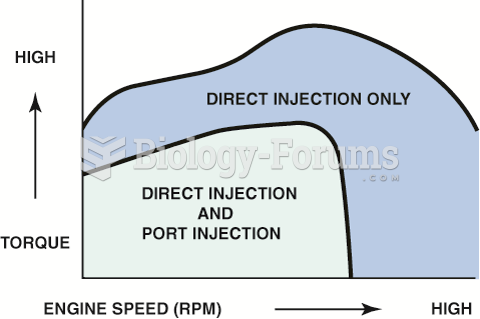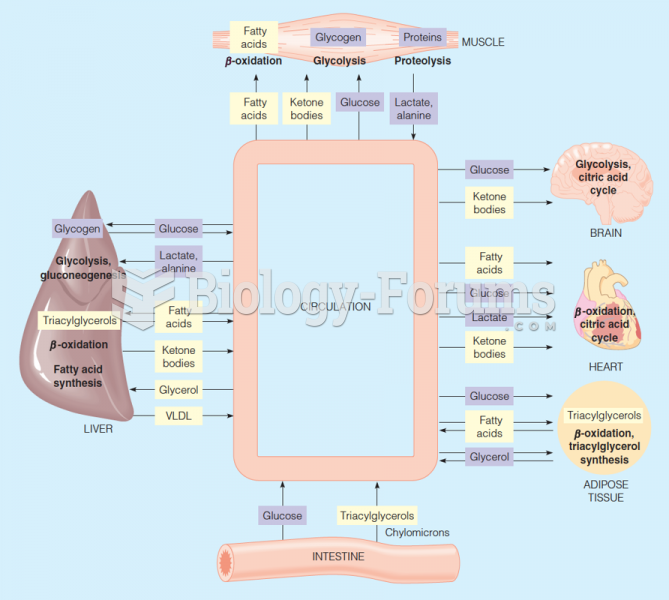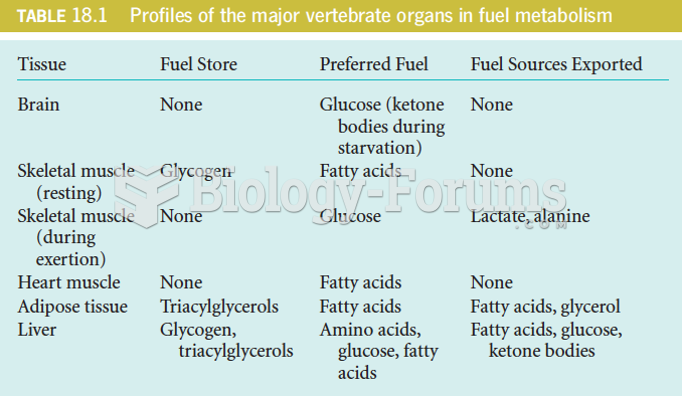|
|
|
If you could remove all of your skin, it would weigh up to 5 pounds.
The largest baby ever born weighed more than 23 pounds but died just 11 hours after his birth in 1879. The largest surviving baby was born in October 2009 in Sumatra, Indonesia, and weighed an astounding 19.2 pounds at birth.
The average older adult in the United States takes five prescription drugs per day. Half of these drugs contain a sedative. Alcohol should therefore be avoided by most senior citizens because of the dangerous interactions between alcohol and sedatives.
Drying your hands with a paper towel will reduce the bacterial count on your hands by 45–60%.
The toxic levels for lithium carbonate are close to the therapeutic levels. Signs of toxicity include fine hand tremor, polyuria, mild thirst, nausea, general discomfort, diarrhea, vomiting, drowsiness, muscular weakness, lack of coordination, ataxia, giddiness, tinnitus, and blurred vision.
 Notice that there are conditions when the port fuel-injector, located in the intake manifold, and ...
Notice that there are conditions when the port fuel-injector, located in the intake manifold, and ...
 This unit is applying smoke to the fuel tank through an adapter and the leak was easily found to be ...
This unit is applying smoke to the fuel tank through an adapter and the leak was easily found to be ...





